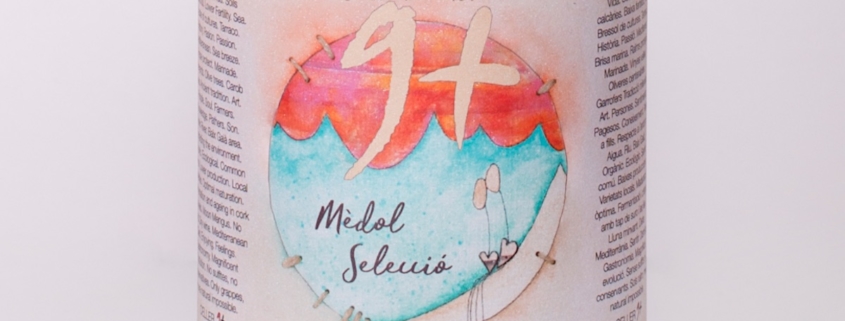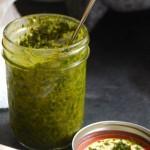Celler 9+ Cartoixà Vermell
Curiosity and the desire for adventure add excitement and spice to life. People who embrace these traits often seem so much more… sexy! Even in this reserved time at home in a more insular world, we can find plenty of ways to nurture our curiosity and sense of adventure. Trying new wines, for instance.
Celler 9+ Mèdol Selleció Cartoixà Vermell is a natural wine. Natural wines seem like a new phenomenon. Really, they are the oldest kind of wine there is. Fruit is grown organically or biodynamically, hand-harvested, and handled with the least amount of technological interference. Wines are made with indigenous yeasts – the ones that are already living on the skins of the fruit and in the environment of the winery. No additions. And, more uncommon, no subtractions (in the form of filtering and fining).
Most wines labeled as natural look different. Not just the actual labels, which tend to be more unusual and creative. Frequently, the wine looks a little cloudy. Or maybe a different color than expected. Red wines don’t look as red. White wines may have an orange hue and are sometimes called orange wines. For the curious and adventurous, they’re a great opportunity to explore!
One Wine, Many Paths to Travel
In telling the story of Celler 9+ Mèdol Selleció, Cartoixà Vermell, there are many paths we could travel. I could share more about the natural wine movement. We could travel through Catalonia, the land of Cava and other wonderful Spanish wines (not to mention great food!). And we could learn more about Cartoixà Vermell, the unique grape this wine is made from.
I’ll take the last two. For more about the natural wine movement, you can check out what I wrote about Josko Gravner, the catalyst for the revolution. And here’s a little more about Cava.
Tarragona and Catalonia
Tarragona is part of Catalonia (or Catalunya) in Northeastern Spain. Catalonia is where you’ll find all the deliciousness that is the city of Barcelona. It’s also the home of Cava, Spain’s methode traditionnelle sparkling wine.
The Tarragona DO (Tarragonès) stretches along the Mediterranean coast. Wine has been made here since the Ancient Greeks and Romans. Most of the grape growing here are Macabeo, Parellada, and Xarel.lo destined for Cava production. Although Garnacha is also popular. The region has an interesting distinction as being the home of Catholic communion wines. It was also the home of the unique liqueur made by the Carthusian Monks, Yellow Chartreuse, until 1989.
Cartoixà Vermell
It’s a grape. A very rare grape from Catalonia. It’s pronounced like “car-toy-cha ver-mayl” – don’t forget to roll your r’s. It’s the red version of the Xarel.lo (char-el-oh), the grape at the heart of Spanish Cava. Although the skins are red, they are lightly pigmented and rarely produce a wine darker than a rosé.
So far, I haven’t found much more information about the mysterious Cartoixà Vermell. That makes it even more interesting to me! I wish I spoke or read Catalan – that may be helpful in this new curiosity. If I learn anything, I will certainly share.
Celler 9 Mes (9+)
This small winery was founded in 2010 by Moises Virgili in the town of Nou de Gaià. To say that Virgili is serious about sustainability and the ecological implications of winemaking is an understatement. The entire property is organic. The farms are controlled and certified by the Catalan Council of Ecological Agriculture. The commitment goes beyond the physical process; the preservation of culture is also important. Hence, growing and making wine from the rare regional grape Cartoixà Vermell.
In making the Mèdol Selleció Cartoixà Vermell, the grapes are hand-harvested, destemmed, and placed in stainless steel tanks for about 5 days at cool temperature. After the initial maceration, the fruit is pressed. The first press is very gentle; the juice from this press is what is used in making the Mèdol Selleció wine. At no time is sulfur used in production.
The wine is fermented and aged sur lie (on the yeast) to develop more complex flavor and texture. Since the wine is not fined or filtered, some of the lees make it into the bottled wines. This gives a hazy appearance that is in no way a bad thing. In fact, it helps the flavor of the wine continue to evolve over time.
My Review of the 2019 Celler 9+ Mèdol Selleció, Cartoixà Vermell
The wine is the color of pale rose gold. Aromas reminded me of apple butter spread on toasted brioche. There’s a very mild funkiness, as is common with natural wines that I find appealing. On the palate, the first taste is of autumn apple picking. Crisp apples, crunchy leaves underfoot. This is followed by the taste of peach skins and toasted nuts.
This wine reminded me of Spanish cider for all its apple-y-ness and mild funkiness. There’s plenty of acidity but not too much; some astringency and tannins, and a dry finish. Aromatically, the finish is long with aromas of nuts, flowers, and a touch of honey.
I was craving Spanish food the whole time I was enjoying this wine. Jamon de Serrano, Garrotxa (cheese), crispy salt cod fritters (bacalao), and all the other wonderful little plates of tapas you’ll find in the region.
Check out Chef Diane Brown’s recommendations for making your own romantic Spanish tapas tasting at home.
Where to Buy Celler 9+ Mèdol Selleció, Cartoixà Vermell
As with many small wineries, distribution is limited. I found this wine online from DomaineLA. There are a couple other producers who make wine from this grape. Contact your local natural wine shop to find out more about what’s available near you.
- Easy Oven Roasted Turkey Breast Roll Recipe with Wild Mushrooms and Kale - December 1, 2023
- A Sexy Hot Sorrel Drink Recipe with Caribbean Rum - November 30, 2023
- Charcuterie Board for Two: how to build a date night charcuterie board - November 10, 2023
Did you know that eating the right foods can be the key to boost your sex life?
Subscribe to the Eat Something Sexy mailing list and get our exclusive list of Six Great Sex-Boosting Snack Foods for FREE!





Leave a Reply
Want to join the discussion?Feel free to contribute!